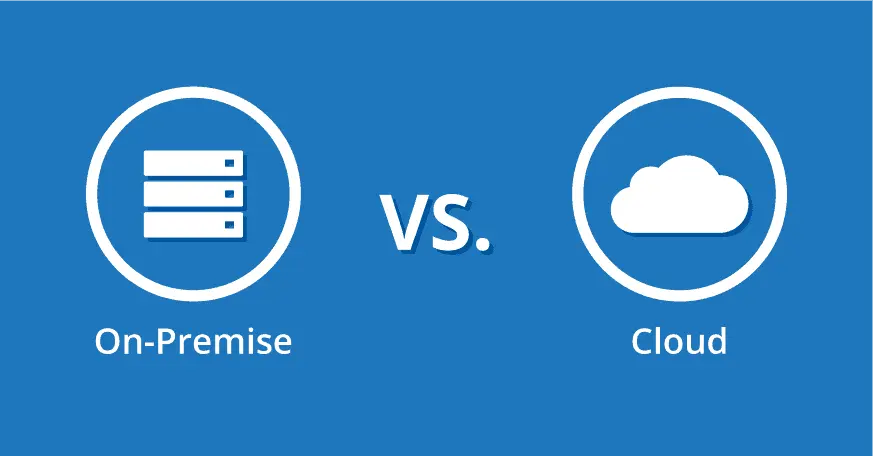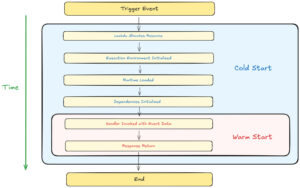On Premise Vs Cloud: What to Know Before Making a Decision
24/05/2023
720
Table of Contents
Navigating the digital landscape can be daunting, especially when faced with the crucial choice between on-premise and cloud-based solutions. As these technologies shape the backbone of businesses both large and small, making the right choice is imperative.
In this article, we’ll explore the key differences between on-premise vs cloud solutions. We aim to demystify these concepts and arm you with the necessary knowledge to make an informed choice. Let’s begin our journey into the heart of digital infrastructure.
The Evolution of Data Storage: From On-Premise to Cloud
The evolution of data storage has been incredibly fascinating. Over the years, there has been a considerable shift from on-premise storage to cloud solutions.
In particular, on-premise storage is the traditional storage method that locates data on local servers of an organization’s premises.
On the other hand, the cloud method involves storing data on remote servers so it is accessible via the Internet.
However, shifting from on-premise to cloud storage has its challenges as well. Many organizations care about data security, especially when outsourcing and the potential for data breaches. Cloud storage providers offer robust security measures. But it’s important to realize the risks and implement security protocols.

Overall, the evolution from on-premise to cloud has been a huge opportunity for different organizations. Both solutions have their pros and cons, but many go for cloud storage because of its flexibility, cost-effectiveness, and accessibility.
On-Premise vs Cloud-Based Solutions: Key Differences
In the ever-evolving landscape of technology solutions, the debate between on-premise and cloud-based options remains a pivotal point of discussion. Here are some keys differences between the two:
| Factors | On-Premise Solutions | Cloud-Based Solutions |
|---|---|---|
| Physical Control of Data | Data stored and managed on-site | Data stored and managed by the cloud provider |
| Scalability and Accessibility | Limited scalability and accessibility | Highly scalable and accessible from anywhere with an internet connection |
| Customization | Highly customizable to specific needs | Limited customization options |
| Implementation Time | Longer implementation and setup process | Faster implementation and setup process |
| Disaster Recovery | Relies on local backup and recovery systems | Built-in disaster recovery and backup solutions provided by the cloud provider |
| Maintenance and Data Security | In-house responsibility for maintenance and security | Cloud provider responsible for maintenance and security |
| Initial Cost | Higher upfront cost for hardware and software | Lower upfront cost with pay-as-you-go pricing model |
| Hardware and Software Updates | In-house responsibility for updates | Automatic updates managed by the cloud provider |
So Which is Better? On-Premise or Cloud?
The answer depends on your specific requirements and resources.
On-premise solutions offer physical control of data, enhanced security because the data remains within your corporate network, and highly customizable options but require significant upfront investments, longer implementation time, and ongoing maintenance responsibilities, including security updates.
Cloud-based solutions provide scalability, accessibility, faster implementation, built-in disaster recovery, and lower upfront costs. They also often come with robust security measures, including encryption and dedicated security teams. However, data in the cloud is managed by a third-party, so trust in the provider’s security protocols is essential. These solutions are usually more advantageous for flexibility, cost-effectiveness, and ease of maintenance, making them a popular choice for many businesses.
Factors to Consider When Choosing Between On Premise vs Cloud
There are many benefits of cloud vs on premise. By considering these following factors, you can make an informed decision between on premise vs cloud solutions.

Business Size and Type
Consider the size and type of your business, as larger enterprises with complex IT infrastructure and specific regulatory requirements may benefit from the control and customization offered by on-premise solutions, while smaller businesses with limited resources may find cloud-based solutions more cost-effective and scalable.
Budget and Cost Considerations
Evaluate your budget and cost considerations, as on-premise solutions typically require substantial upfront investments in hardware, software, and maintenance, while cloud-based solutions offer a pay-as-you-go model with lower upfront costs and predictable monthly expenses.
Cloud vs on Premise Security and Compliance Needs
Assess your security and compliance needs, as on-premise solutions provide greater control over data security and allow for strict compliance measures, while cloud-based solutions often have robust security measures in place but require trust in the cloud provider’s security protocols and compliance certifications.
IT Infrastructure and Staffing
Consider your existing IT infrastructure and staffing capabilities, as on-premise storage requires dedicated resources for infrastructure management, software updates, and troubleshooting, whereas cloud-based solutions offload much of the maintenance and management responsibilities to the cloud provider, reducing the need for extensive in-house IT staff.
Future Growth Plans
Anticipate your future growth plans, as on-premise solutions may require additional investments and upgrades to accommodate scalability, while cloud-based solutions offer inherent scalability and flexibility, allowing you to easily adjust resources and accommodate business growth without major infrastructure investments.
Making the Transition: From On-Premise to Cloud
Making the transition from on-premise to cloud can be a daunting task for any company. However, with careful planning and employment, you can get a smooth and fruitful process.

- First and foremost, it is important to carefully evaluate the current infrastructure and identify potential roadblocks coming to the transition. This includes outdated hardware or software that is not compatible with the cloud environment.
- The next step is to choose the right cloud service provider that can meet your company’s needs. Then, you should carefully consider their security, scalability, and cost-effectiveness.
- After you have chosen a cloud service provider, you can start to develop a migration strategy and outline the steps of the transition. This strategy should also include sub plans in case of any unexpected changes.
- Finally, ensure that your team is properly trained in the new cloud environment. This will contribute to a seamless transition and avoid potential downtime or disruptions.
Conclusion: Call SupremeTech to Ensure a Smooth Transition!
When transitioning from on-premise to cloud solutions, SupremeTech is on your side to ensure a smooth and successful migration. With our expertise in technology, we understand the challenges during this transition and can guide you through every step of the process.
By calling SupremeTech, you gain access to our experienced professionals. We will assess your unique business requirements and help you determine the most suitable cloud-based solution for you!
Related Blog





















